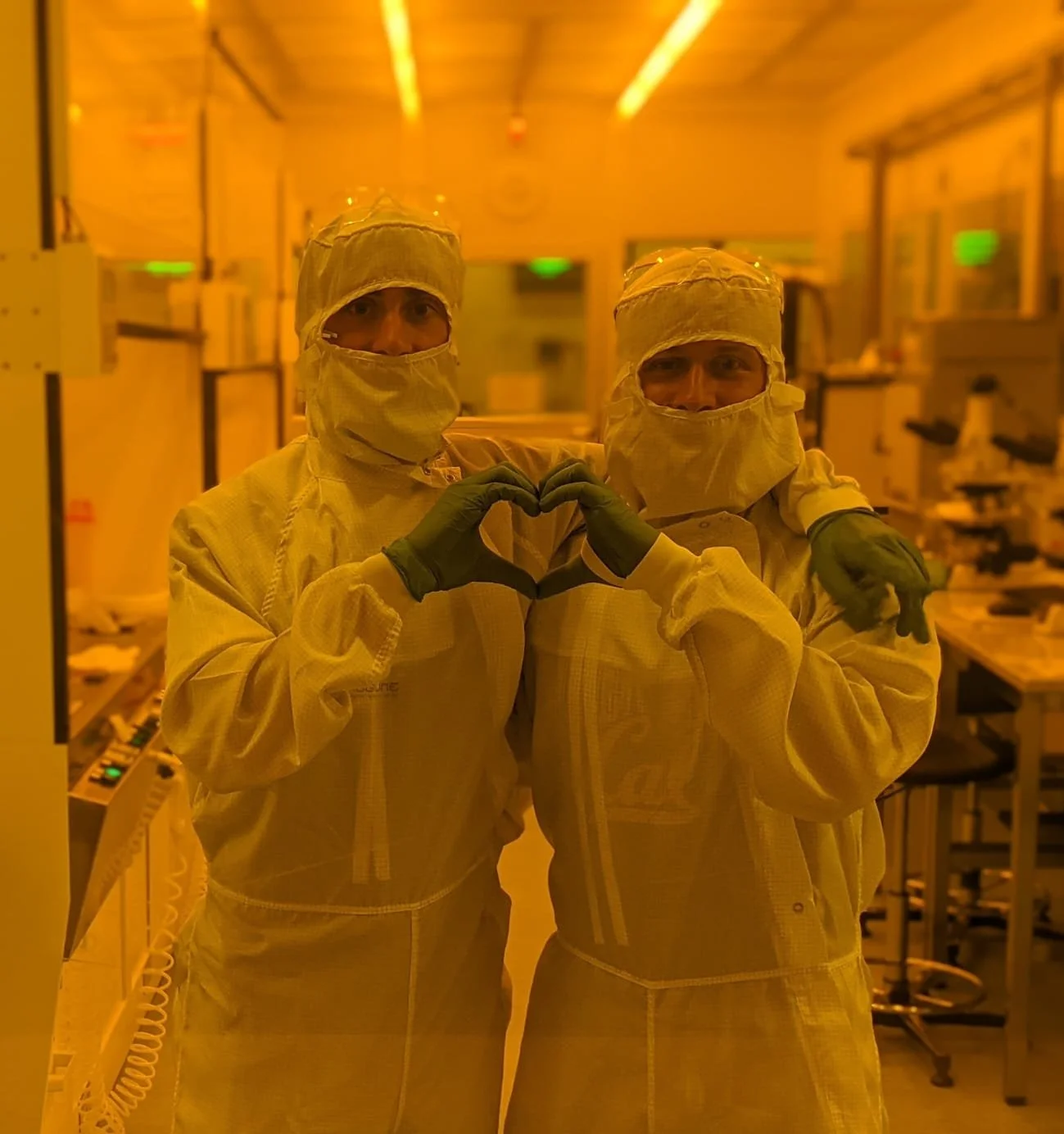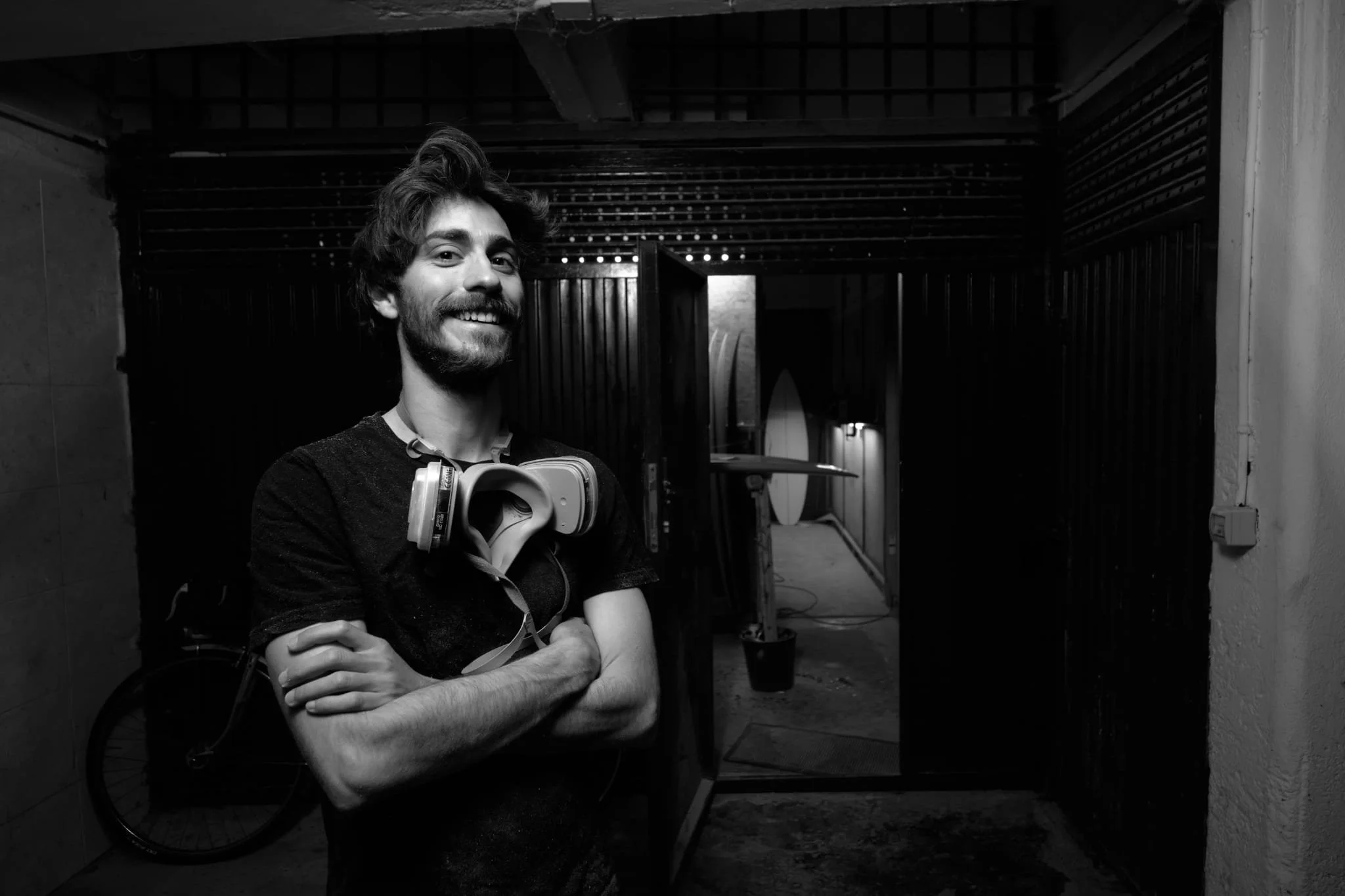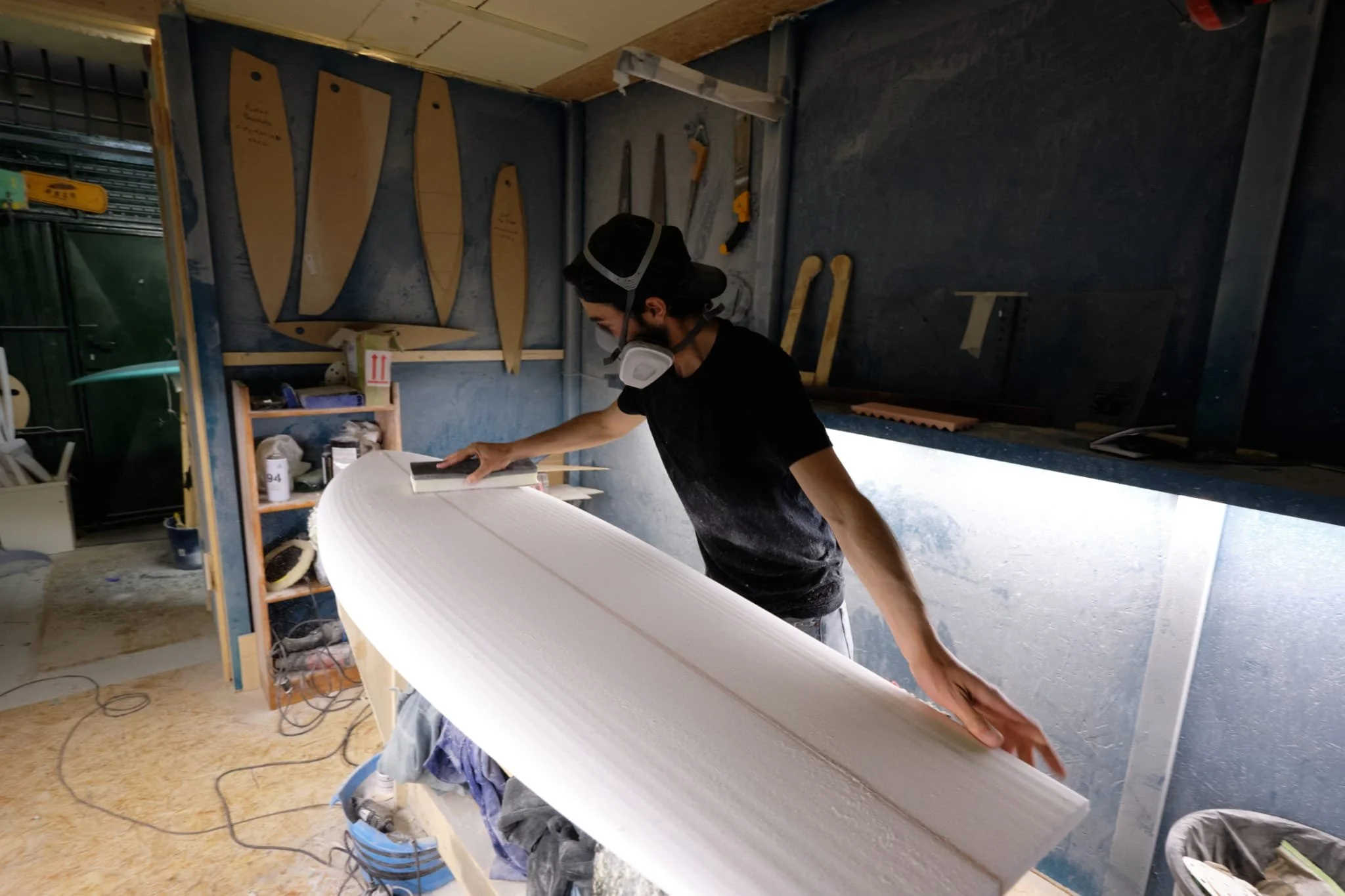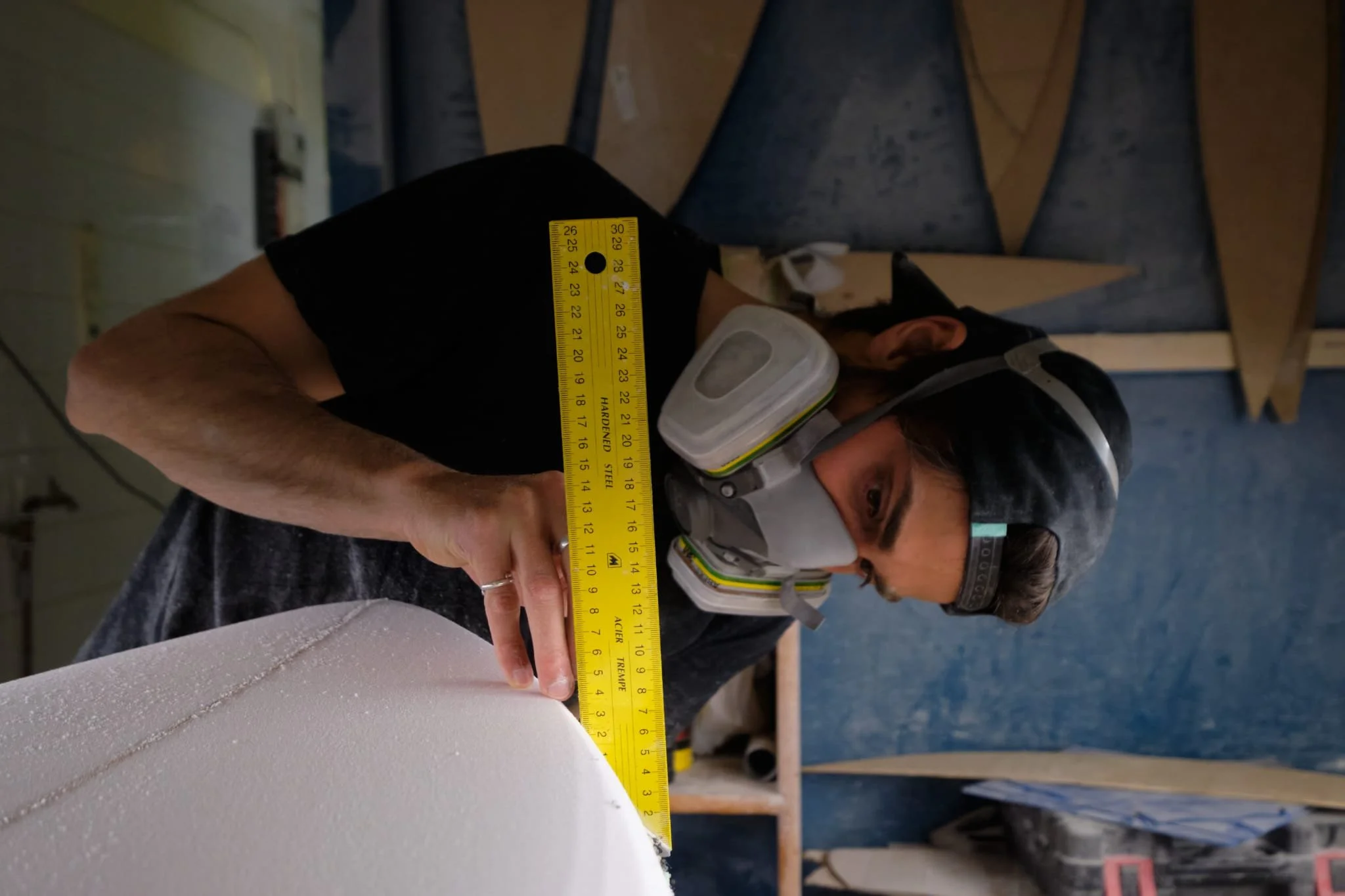An Italian Perspective on How to Approach Ocean-Friendly Change
Gabriele Botta
He defined himself as a “city creature”, but the lure of the sea has always courted him. Gabriele Botta, still in his twenties, grew up with a steady passion for surfing — despite being raised in Milan, Italy. That passion eventually led him to build a strong understanding of the bond between craftsmanship and ocean sustainability. As we talk, it is clear how Gabriele’s upbringing and surroundings have shaped his entire life, albeit in an unexpected way. Why unexpected? Because it is unusual for someone living in the landlocked, urban centre of Milan to fall in love with the ocean through surfing. However, in a specific moment of his life, Gabriele found a way to temporarily import his passion into the city:
“I started surfing when I was 10 years old. We used to visit the Cadiz area of Spain where there is some surfing, so it became one of the central passions of my life. From the age of 18 until the end of university (23 years old), I was still living in Milan and didn’t manage to surf much. So I figured I could import my passion into the city by starting to make surfboards.”
Surrounded by antique furniture restored by his parents’ restoration business, a family carpentry workshop and many different craftsman tools, Gabriele decided to build a small cubicle so that “I could make as much mess as I wanted without contaminating my parents’ stuff, and since I started doing it [crafting surfboards], it has always been very satisfying and fun.” The Italian surfer unveiled a strong and early connection to environmental sustainability solutions. He chose to start fabricating surfboards using green materials — such as a bio based Epoxy resin that allowed him to collaborate with inspiring entrepreneurs such as Jordi Oliva Farriol, now co-founder of Good Karma Projects. Through his academic background in classical arts at the Liceo artistico di Brera and materials science at the University of Milan, Gabriele acquired a strong knowledge of the risk and effects of prolonged exposure to potentially unsustainable materials.
“As far as board construction is concerned, all materials that are not very sustainable are also generally more harmful: [...] The resin that is used in most cases [in surfboard manufacturing] is called polyester resin and during the drying phase (curing phase), […] it releases a lot of molecules in the gas phase (volatile organic compounds: VOC) which are hazardous for both human health and environment.”
Materials sustainability is important — see the damages plastics are causing — but what’s more important is preventing human-made products from entering the ocean and other ecosystems. This is something that environmentally conscious craftsmanship can help tackle. As a matter of fact, the big difference between the mass market and something handmade lays in the requirements of the value chain: “the requirement of a mass product is that it’s cheap and fast to produce;” thus much more polluting, while “the requirement of a handmade product is that it performs exactly the use for which it was designed” says Gabriele. Overproduction and overconsumption have no place in the realm of sustainability. That’s why in Gabriele’s universe, materials sustainability supports the ethics around producing surfboards on such a small scale:
“I’ve chosen to use the best quality materials I can, obviously with the proviso that they cost double if not triple. And at this point, the only factor that can bring a little bit of fairness in this system where you’re putting more money […] is clearly the average life span [which is longer] of the object that you produce.”
This can be an advantage as,
“[…] it encourages people to become attached to the object they buy instead of seeing it as a simple product that you need to perform and then throw it away after two months because it doesn’t float as well as it used to. That’s also a part of the whole ethics I have around sustainability in surfing.”
Prompted by his growing skills and network of connections, Gabriele decided to leave the city. He found a place where his passion could thrive.
“When I finished university I decided to move to San Sebastián [Spain] and at that point, my prerogative became to go back surfing. You have a growing passion for surfing but you still live in Milan: so there was this huge contradiction of having a passion that doesn’t match your [current] environment.”


People often dream of reorienting their life towards a different path, but when it comes down to actually making the leap, it can be a very scary step. Still, Gabriele decided to take the leap. He figured it was time to change perspective and be open to a more purposeful life. Once in Spain, something drastically changed: “I used to be obsessed with surfing. But after years of living here I am no longer so obsessed. Instead, I am genuinely passionate about the ocean.” Still a waves-rider, Gabriele focused significantly on turning the tide. He made another step forward to contribute to the “sustainability of tomorrow” while aiming to support marine organisms involved in carbon sequestration activities. He started researching nano-science with a growing interest in the field of decarbonization: “It is a field I feel is related to my knowledge. During my PhD I studied the reaction between surfaces and nanomaterials and elements or molecules in the gas phase.” Gabriele’s area of interest is focusing on the in-depth study of these solid materials, surface catalysts that are able to interact and capture molecules in the gaseous state — which in this case would be CO2 — “[…] it’s interesting because there seem to be several options to capture CO2 or to make it react into something useful,” therefore enabling a reduction in the workload on the natural resources of our planet.
Gabriele pursuing his PhD
Gabriele’s choice to pursue such a PhD research program led him to a realisation: the more he knew about carbon sequestration techniques the more he was aware of the heavy burden of climate change on the environment. This gave him an additional push to move new steps towards a tangible way to make an impact and turn his passion into something more environmentally conscious.
While still in Spain, Gabriele’s passion for surfing took on another dimension. He took a newfound interest in the so-called “upcycling” process — a sustainable practice that commits to granting trash new creative reuse. It started with the Creators & Innovators Upcycle Contest organized in 2019 by Vissla and Surfrider Foundation — whose CEO appeared on Seaspiracy. With his “Spongeboard” — a surfboard “made with 280 old smelly sponges” — Gabriele was among the finalists of the contest.
“My project was born when one day, in my cubicle where I make my boards, I noticed a sponge that had been soaked in resin and had somehow solidified, […] and was floating. At that moment I had an epiphany and thought ‘if I put the sponges together[…] I can replace the polystyrene that represents the inner core of the surfboard’.”
To pursue his project, Gabriele started a “tremendous campaign to collect used sponges, which was fun but shocking at the same time”. Gabriele laughs as he remembers people bringing “wet sponges on the work table, with cheese still on them which was… disgusting!” The point of this competition was also to make a stand in favour of finding another use for waste materials since “the road is easier”, remarks Gabriele. The “Spongeboard” was tested by his creator himself and was able to surf — besides all the technical and performative difficulties such a board may encounter in its lifespan. To have been his first trial at upcycling, Gabriele’s surfboard can nonetheless serve as a point of reflection on two main topics: the importance of thinking about methods that will enable recycling and/or reuse materials; and the value of conceiving a product that, at the end of its life cycle, can be repurposed in multiple applications.
“I think you have to produce things that are designed to be recycled and/or reused — that’s the game-changer. Everything we have done so far has been to produce things that are thrown away at the end of the cycle. If you change this paradigm you can get a class of materials and objects that can be perfectly recovered and if not completely recycled, [at least partially].”
Gabriele has very clear ideas about how to limit the environmental damages caused by a surplus of goods — by fostering craftsmanship — and how to prevent humanity’s waste from entering where it can cause irreversible harm — by encouraging investments in research, promoting educational and cultural shift on products consumption and the use people make of materials, supporting a conversion of the whole production system. To make it easier for everyone, it’s crucial to phase out all obsolete systems one step at a time, to have time to implement change in each one’s daily life.
Gabriele (Gabo for friends, as we may now call him) ends his interview with a specific memory; the vision of a seal pup on the beach:
“I've seen a baby seal on the beach more than once during the low season […] and it happens that the pups that are a bit more disoriented and weak end up on the beach — I've never actually heard of pups being dead, but simply they stationed on the beach for a few days […] the beach is fenced off to prevent people or dogs from bothering them. […] This seal pup stayed for a couple of days in San Sebastián and then left […] I found it amazing that he seemed more at ease in a human context than us. Only we have a complex vision, animals are like eternal children.”
And we could probably use more simplicity in our lives to extinguish many of the problems we create in our own habitats, turning them into unlivable places.
About the Author: Vera Brocchieri is a thoughtful observer on the world’s ordinary -extraordinary in their singularity. She studied journalism in Italy and in Belgium and fell in love with whales in Australia. She loves animals, nature, and art in all its forms, Inline skates and the Parco Nord in Milan? My sources of (renewable) energy!
About the Subject: Gabriele Botta’s passion for art and science made him an artist and designer of impossible structures. After graduating from Brera’s artistic high school in Milan, he started his scientific career at university and continued it in San Sebastian with a master's degree in nanoscience and a PhD in nanomaterials.















